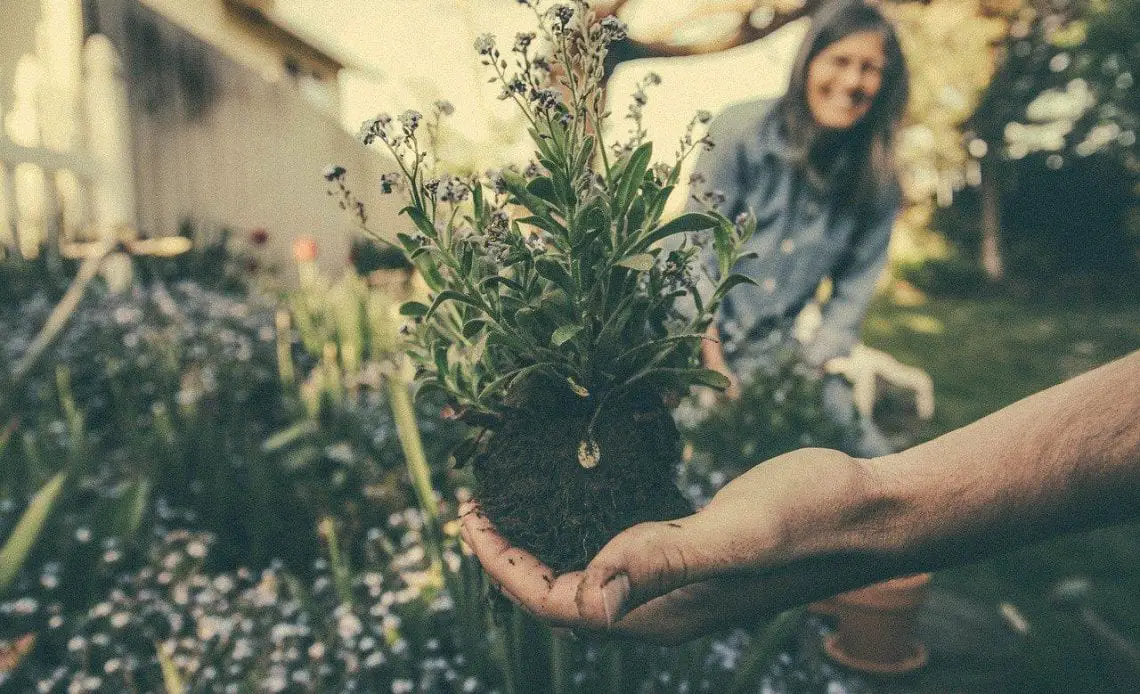
Gardening is a fruitful activity that involves a lot of patience and perseverance. When you spend enough time to tend the varying needs of the different plants in your garden you would be rewarded with new growth and lush green space. To keep a check on the plant diseases and to promote healthy growth in plants there is a variety of products used. Some commonly found ingredients at home can also come handy for quickly eradicating pests in plants and to improve the yield. One such ingredient is hydrogen peroxide. The use of hydrogen peroxide for plants is a popular topic discussed by gardeners around the world.
Can you use hydrogen peroxide for flowering plants?
Yes. Hydrogen peroxide can be used in the garden for all types of plants. There are numerous ways in which this ingredient can be used to improve the health of the plants in your garden. The use of hydrogen peroxide for plants also gives an eco-friendly alternative to using harsh chemicals that can hamper the soil quality in the long run. This also makes a safe ingredient to be used around edible crops.
One of the main reasons why the use of hydrogen peroxide for plants is popular is because this compound is naturally occurring. When used in the right concentrations, this compound is also easy to break down. It, doesn’t pollute the soil or change its nutrient composition. The blooming rate in flowering plants would not be altered as this ingredient doesn’t interfere with any of the organic plant food you add.
Adhere to safe storage and application methods when you use hydrogen peroxide. Remember that it is used as a weed killer. It can burn the foliage and kill the plants when you use it in high concentrations. So, you should be careful when you use hydrogen peroxide solution as a weed killer close to flower beds. Make sure that the solution doesn’t touch the flowers. To use in the flowerbed, you should directly use them in the soil in the recommended concentration.
As long as you strictly follow the dilution instructions for the specific plant problem you are addressing, hydrogen peroxide is safe to use for flowering plants. It can be used to enhance growth in some cases and also to care for your plants.
How can you use hydrogen peroxide for plants in your flower bed?
1. Cure for fungal diseases:
The occurrence of white spots on leaves could be one of the many indications of fungal diseases in flowering plants. Powdery mildew problem and all types of fungal attacks in flowering plants can be tackled with hydrogen peroxide. This ensures that flowering plants do not become weak especially in the blooming season.
Visible deterioration in the flower quality can also be prevented with the use of his ingredient. All it takes is a diluted spray consisting of water and hydrogen peroxide. Make sure that you use the right concentration so that you do not end up burning the leaves.
One of the most popular applications of this method in flowering plants is the use of hydrogen peroxide to fight foliar disease in orchids. It can bring back the color in your orchid leaves if fungal spores result in discoloration.
2. Rejuvenate plants with root rot:
If the drainage system in your flower bed or containers is not sufficient, it can result in water pooling in the soil. When left unaddressed for a long time it can lead to rotting of the roots. This can sometimes affect the germination of flower bulbs as well. To cure root rot and ensure that the bulbs you plant grow into beautiful flowering plants you can use hydrogen peroxide.
3. Improve aeration in the soil
Even with good quality soil, to enjoy better quality blooms your soil should be well aerated. Hydrogen peroxide can break down into oxygen and elevate the oxygen content in the soil. This can be beneficial especially when your flowering plants are exhibiting stunted growth due to poor quality roots. The improved aeration of the soil can result in better oxygen absorption and so, healthier roots. Flowering plants can benefit from the better foliage growth that comes as a result of improved oxygen levels in the soil. Aeration of the soil also ensures that the plant food applied the soil is absorbed and used efficiently. Better aeration also results in lower chances of plant diseases.
4. Bug management:
Degradation in the size or color of the flowers can sometimes be due to tiny bugs. To restore the health of your flowering plants after a bug infestation, hydrogen peroxide is an effective ingredient. It can tackle the common pests in flowering plants like aphids. Hydrogen peroxide for plants acts as a bug repellent. It keeps the pesky insects away from the flowers and leaves instead of killing them. Spritzing a diluted solution of hydrogen peroxide does the trick. As an alternative to chemicals that can leave a nasty smell, this one can do the work rapidly without hampering the fragrance of the blooms.
5. Seed germination stage:
No matter how careful you are in identifying and treating plant diseases at the early stages, sometimes things feel unmanageable. The problem could be due to poor quality seeds. If you are unsure about the source and quality of seeds, you can use hydrogen peroxide to sanitize the seeds before you plant them. This helps in eradicating pathogens in the seeds. This can result in a better germination rate and a more robust growth of your flowering plants.
Besides the above-mentioned benefits, you can also use hydrogen peroxide for plants grown in hydroponic systems. This improves the oxygen absorption in the flowering plants raised in the hydroponic method. Now that you know about the benefits of hydrogen peroxide for flowering plants you can easily use it to boost the health and appearance of your flower bed. Using eco-friendly ingredients like this one gives you a sustainable approach to maintaining a healthy garden.
